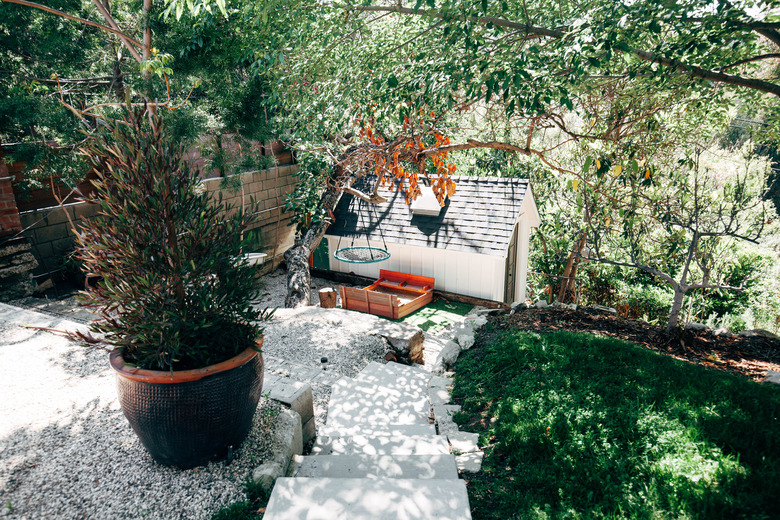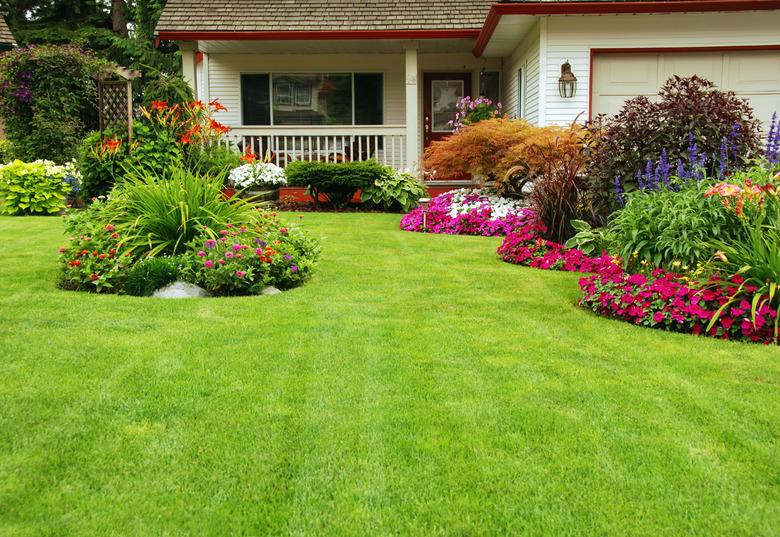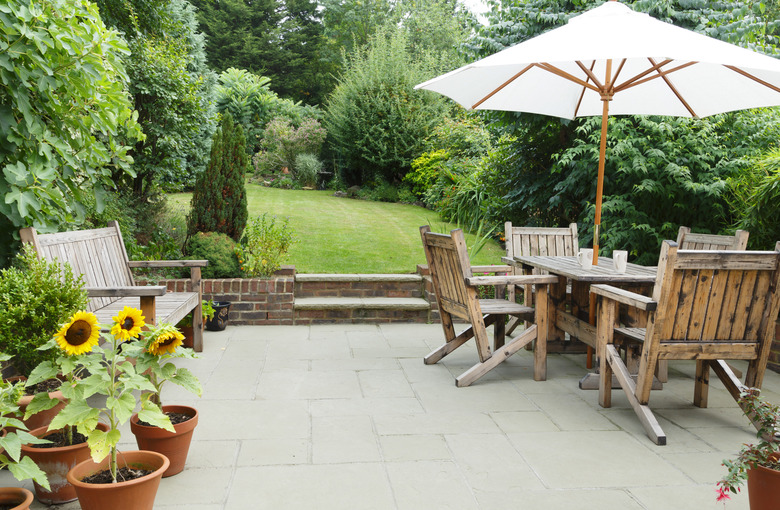A Homeowner's Guide To Spring Landscape Maintenance
We may receive a commission on purchases made from links.
Long, cold winters may make it seem as though it will never happen, but eventually, your spring landscape will shake off the winter blues and launch into action. It's important to be ready when it does so that you can give your outdoor space a head start on the growing season. A little landscape maintenance now will help your garden reach its full potential when summer comes.
Do Some Spring Cleaning
Do Some Spring Cleaning
As winter starts to fade away, you'll likely find that your lawn and garden need a little attention. To prepare your flower beds, rake out any remaining fall leaves or winter debris, like twigs. Don't worry if you take some of last year's mulch with you as you rake; you'll add fresh mulch later after doing your spring landscape planting. After raking, take an edger or square shovel along the edges of your flower beds and recreate a sharp, crisp line between the bed and the lawn.
Spring isn't the right time to prune most trees and shrubs, but you should still examine them closely. If you see dead or broken limbs, remove them yourself or hire a professional to do so. Damaged limbs can fall at any time and often do during intense spring rain and storms. It's best to remove them safely now rather than waiting for Mother Nature to throw them wherever she likes later.
A heavy snow load can also bring down limbs and may have done so over the winter. Remove any dead or damaged limbs that fell onto your property during the winter months and then rake your yard. Raking the lawn removes dead grass and leftover fall leaves. Always wait until your lawn is dry before raking, however. If you rake the lawn when it's too wet, you may pull out clumps of healthy grass along with the thatch and debris, creating unwanted bare spots.
Check Your Equipment
Check Your Equipment
Alas, the arrival of spring also means the start of the mowing season. It's a good idea to make sure your mowing and trimming equipment are in good working order now rather than scrambling to make repairs later in the summer heat. Check or change your mower's spark plugs, air filter and oil. Also ensure sure your mower blade is sharp and sharpen or replace it if necessary.
Examine all the other equipment you'll need for lawn and garden maintenance as well. Weed trimmers, edgers, irrigation systems, garden hoses and all the other tools you use in the summer should get a once-over in the spring to ensure they're ready. Fill a gas can or two as well so you don't need to run to the gas station every time you reach for the mower or weed whacker.
Love Your Lawn
Love Your Lawn
Once you know your lawn equipment is in good working order, it's time to start using it. According to Scotts, spring grass should stay 3 to 4 inches tall. This encourages deep roots and helps shade your lawn, discouraging the growth of weeds. In the summer, you can cut your grass shorter so you can mow less often, but never remove more than 1/3 of the total length of the grass blade at a time.
Early spring is the time to apply fertilizer to your lawn and landscape plants as well as a pre-emergent weed killer. If you get outside too late to stop weeds, use a broadleaf herbicide on your lawn instead to kill the existing weeds. Spring is also the time to aerate a lawn for general health (although fall is the best time to aerate in some climates) and to apply insect controls to prevent grubs and other lawn-devouring critters.
Spruce Up Your Spring Landscape
Spruce Up Your Spring Landscape
When the danger of frost has passed, it's time to add some color to your spring landscape. Plant any new perennials or desired annuals when the soil is damp. Damp soil is easier for digging planting holes and provides lots of water for your new plants as they establish themselves. Mansell Landscape Management recommends planting anytime from March through May.
After planting, mulch your flower beds. Mulch helps protect young plant roots from the sun, slows evaporation and helps keep weeds at bay. Remember to leave 1 to 3 inches between your plant stalks and the mulch so as not to encourage rot or insects at the base of the plant. Mulch also helps to keep tender spring roots warm in the event of a late cold snap.
Prepare Outdoor Living Spaces
Prepare Outdoor Living Spaces
Perhaps the best part of readying your spring landscape is getting out the power washer. A garden hose and a little soapy water also work, but let's be honest — the power washer is way more fun. Use your power washer to clean off patios, walkways, driveways and other hardscape features, like block or stone walls.
You'll also want to clean outdoor furniture and picnic tables. Even if you stored your outdoor furniture and decorations over the winter, you'll still want to wipe away dust and cobwebs to freshen up everything.


